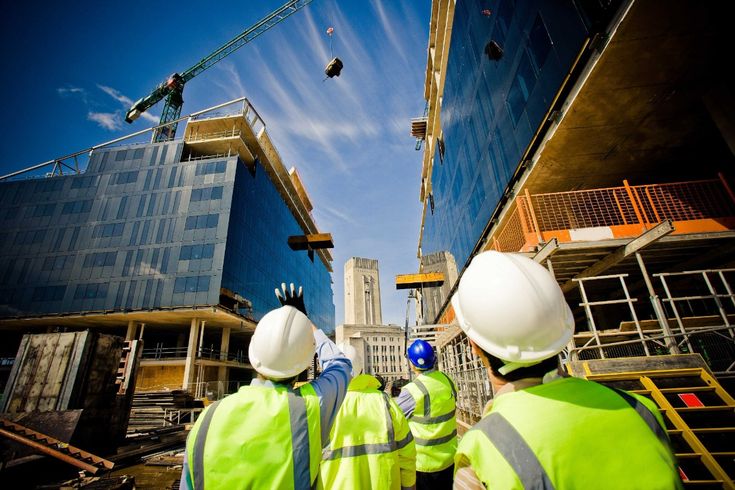
In architecture, design is often associated with creativity, aesthetics, and innovation. One of the most critical but less visible aspects of the profession lies in risk assessment. Every project, whether a towering skyscraper or a small residential home, involves potential hazards that must be anticipated and addressed. Risk assessments guide how architects conceptualize and structure their designs, and determine the safety protocols that protect occupants and the broader community. By identifying vulnerabilities early, architects can balance artistic vision with practicality and ensure that their projects comply with regulatory standards. Understanding how risk assessments shape architectural decisions reveals their profound role in bridging safety, functionality, and design excellence.
Evaluating Structural Integrity

A primary concern in architecture is ensuring that buildings are structurally sound and capable of withstanding predictable and unforeseen stresses. Risk assessments help architects evaluate the strength of materials, load-bearing capacities, and potential weaknesses that could arise. In earthquake-prone regions, seismic risk assessments influence the inclusion of flexible frameworks, shock-absorbing foundations, and reinforced joints. In hurricane-prone areas, wind-load calculations dictate the slope of roofs and anchoring systems. By anticipating structural risks through these evaluations, architects can make informed decisions about design elements, ensuring durability without compromising aesthetics.
Guiding Long-Term Maintenance and Safety Protocols

Long-term maintenance and safety protocols are critical to ensure that a building remains secure and functional, preventing accidents and structural failures. Risk assessments help architects and property managers anticipate wear and tear, plan inspections, and address vulnerabilities before they become critical. For example, areas exposed to heavy rainfall or high foot traffic require regular attention to prevent damage and minimize hazards. Collaborating with experts like those from Tad Nelson & Associates in the process can highlight legal considerations and the importance of having a lawyer in case of an emergency. It ensures that safety measures comply with regulations and potential liability is properly managed.
Incorporating Environmental Considerations

Modern architecture requires careful attention to environmental risks, which are increasingly tied to climate change and urbanization. Risk assessments allow architects to factor in elements such as flooding, extreme temperatures, and soil stability. When designing in floodplains, architects might elevate structures or incorporate water-resistant materials to mitigate damage. In urban heat islands, risk assessments may highlight the necessity of reflective surfaces, ventilation strategies, or green roofs to reduce overheating. These proactive measures protect buildings from environmental damage and safeguard the health and comfort of the people who occupy them. By integrating environmental risks into design decisions, architects create structures that are resilient and sustainable.
Addressing Fire Safety and Emergency Preparedness

Fire hazards represent one of the most significant risks in architecture, and risk assessments play a vital role in shaping design responses. Through careful analysis, architects can determine where to place fire exits, smoke detectors, and sprinkler systems for maximum effectiveness. Building codes and safety standards often stem directly from such risk evaluations, mandating specific layouts that ensure quick evacuation. For high-rise structures, risk assessments may lead to the inclusion of fire-resistant materials and specialized stairwell designs to prevent smoke spread. Beyond fire safety, these assessments consider emergency preparedness more broadly, influencing the location of assembly areas, access routes for first responders, and communication systems. Together, these measures ensure that buildings are functional and life-saving during crises.
Balancing Innovation with Safety Standards

The pursuit of innovative designs often introduces new risks, requiring architects to strike a delicate balance between creativity and compliance. Risk assessments serve as a checkpoint, ensuring that bold architectural concepts do not compromise occupant safety. Experimental materials or unconventional geometries must undergo rigorous testing to confirm their stability and suitability. Assessments might reveal the need for reinforcements, alternative materials, or scale adjustments to meet safety standards. This process does not stifle creativity but rather ensures that innovation is responsibly grounded in practicality. By integrating risk analysis into the design process, architects can push boundaries while maintaining the trust of regulators, clients, and future occupants.
Enhancing Accessibility and User Safety

Risk assessments extend beyond structural and environmental concerns to include the everyday safety and accessibility of users. Architects must consider how people of all ages and abilities will interact with a space. Risk evaluations highlight potential hazards such as slippery flooring, poorly lit staircases, or narrow hallways that hinder accessibility. In response, architects incorporate features like non-slip surfaces, handrails, ramps, and wider corridors to reduce risks and foster inclusivity. These considerations comply with legal accessibility requirements and reflect an ethical responsibility to create safe, welcoming spaces for everyone. Through such user-focused assessments, architecture becomes more humane and socially conscious.
Risk assessments are far more than technical checklists in the architectural process; they are vital frameworks that shape the design and safety of buildings. From structural integrity and environmental resilience to fire preparedness, accessibility, and long-term maintenance, these evaluations guide architects toward solutions that harmonize creativity with responsibility. As the built environment continues to evolve in complexity and scale, risk assessments will remain an indispensable tool for ensuring that architecture is visually compelling and safe, sustainable, and enduring. By embedding risk awareness into every stage of the process, architects can fulfill their dual mission of inspiring design and safeguarding human life.
- 0shares
- Facebook0
- Pinterest0
- Twitter0



